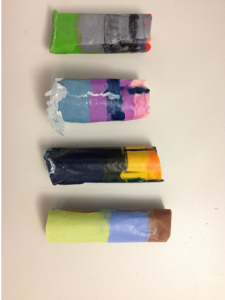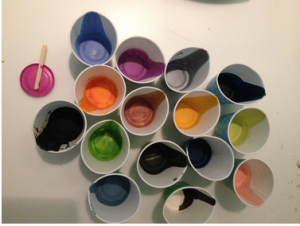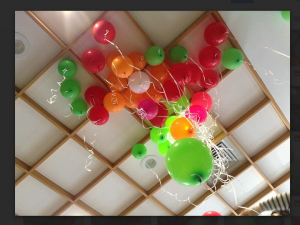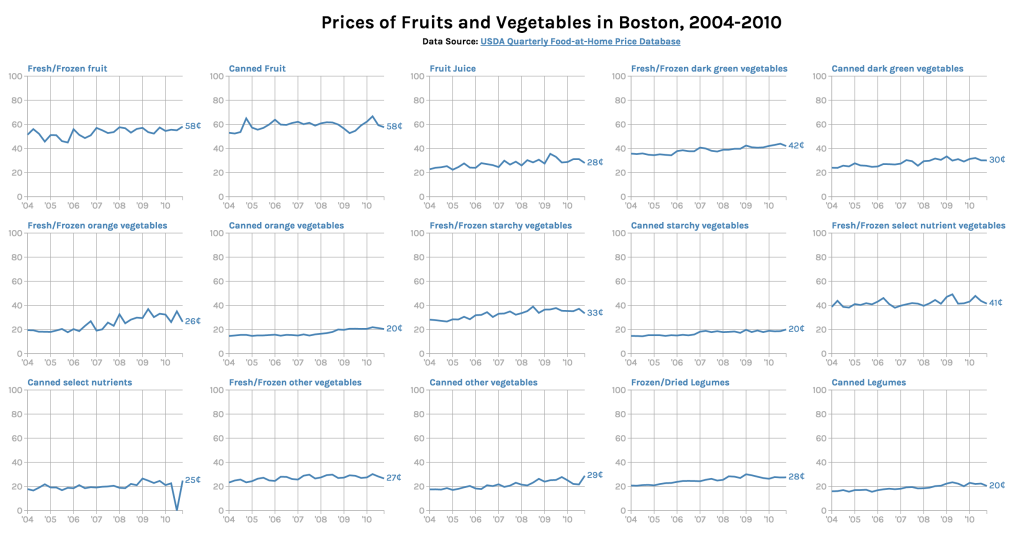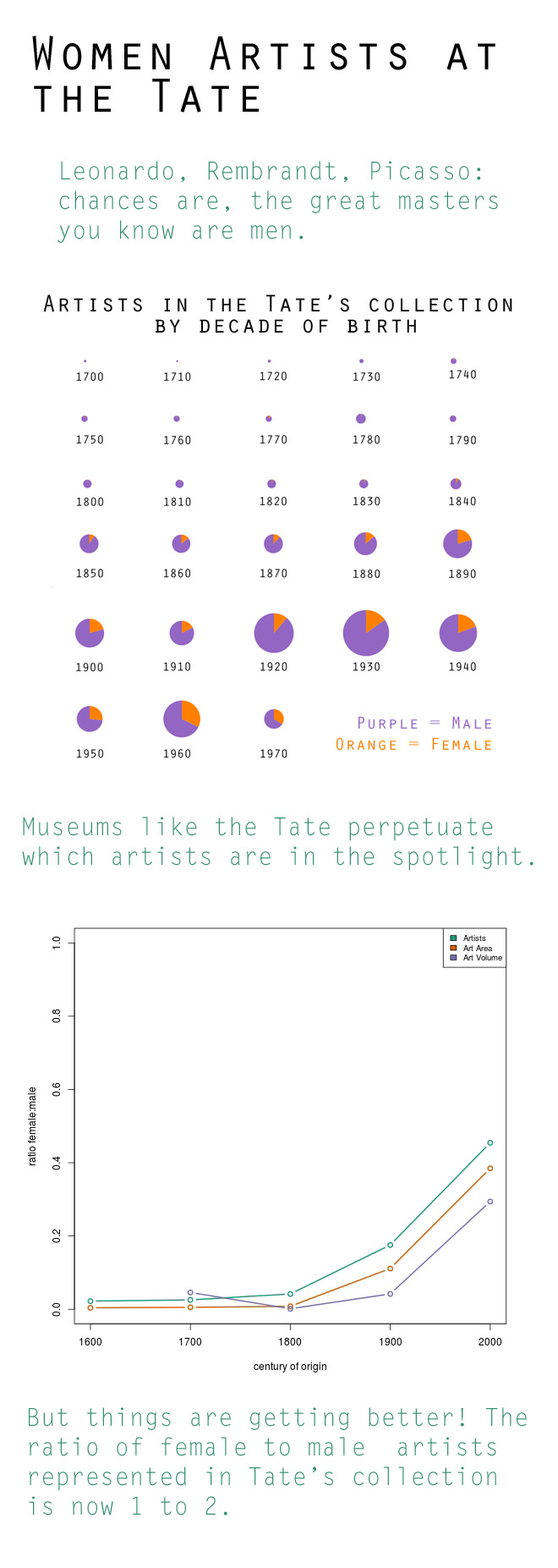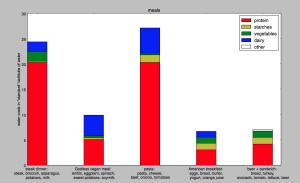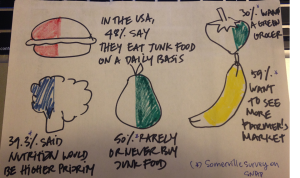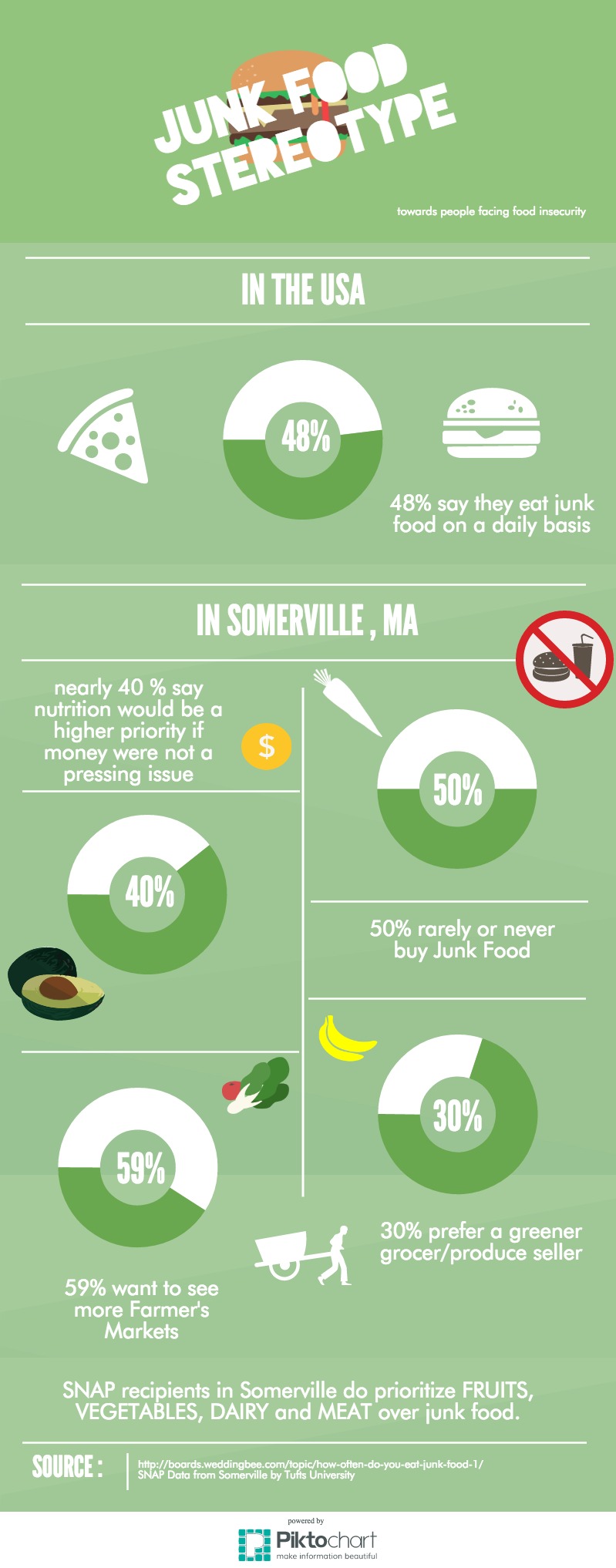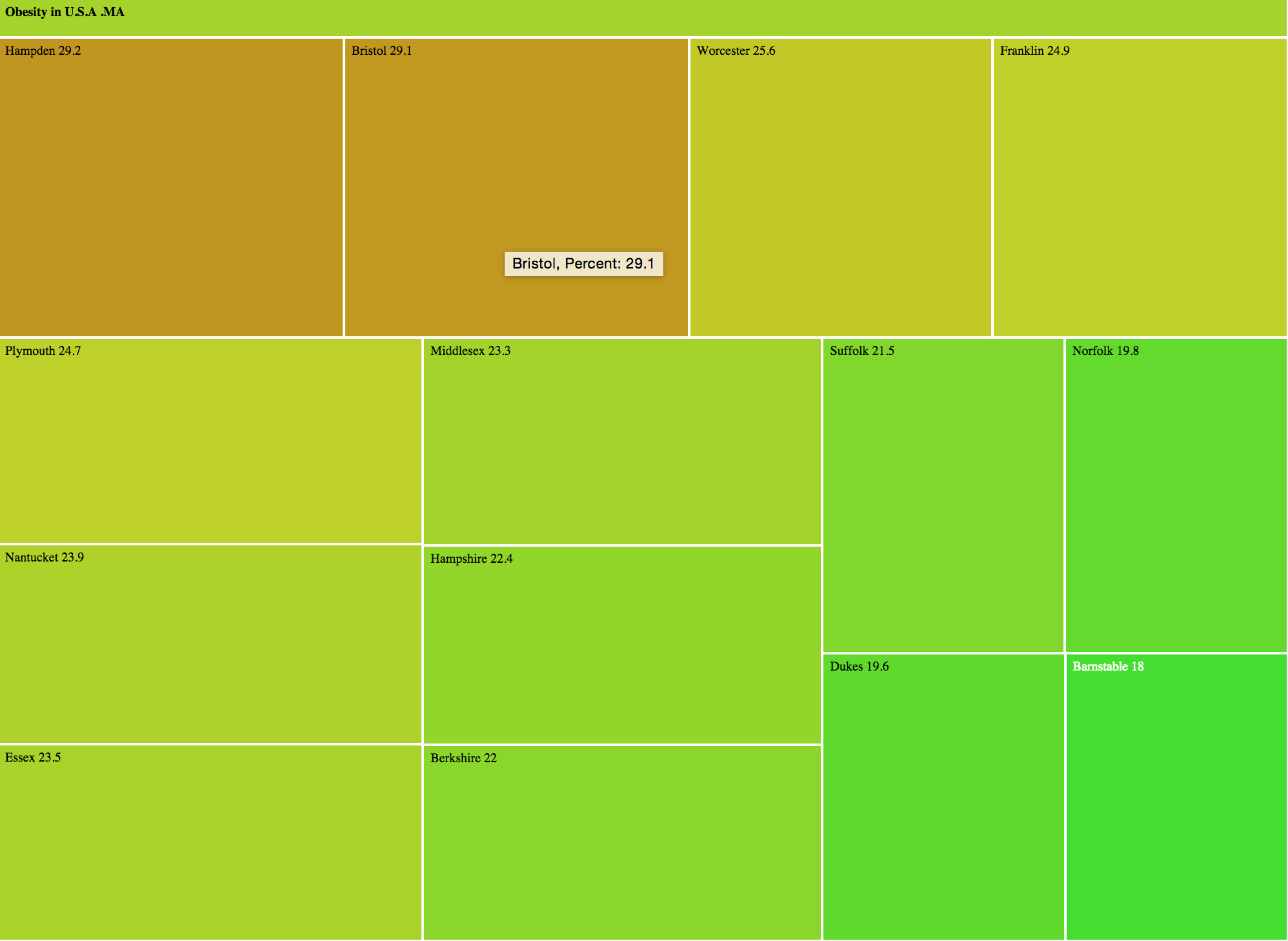Description: We made “art crayons” for four paintings. The composite crayons combine the five most prominent colors in a painting into a crayon. The amount of each color maps to the amount of the color found in the painting. So you could recreate the painting by coloring with just that crayon!
We made crayons for the four paintings shown below. We used the RoyGBiv python module and Cooper Hewitt’s color mapping python module to find the most prominent colors in the paintings and map them to Crayola colors. We bought crayons, selected the correct colors, divided them in the appropriate proportions, melted them, and poured them in layers into a mold we created from wax paper, hot glue, and tape. You can see the results below.
Audience: Kids, adults, people who like art or have a favorite painting.
Goals: Increase engagement with art–you can draw it too! Make art seem more accessible–tangible and everyday. Fun and play!
(1) Alex Katz, Tulips 4, 2013, Museum of Modern Art
(2) Agnes Martin, With My Back to the World, 1997, Museum of Modern Art
(3) Georgia O’Keeffe, Music, Pink, and Blue No. 2, 1918, Whitney Museum of American Art
(4) William H. Johnson, Jitterbugs (II), ca. 1941, Smithsonian American Art Museum
(Team Artvark: Laura & Desi)

